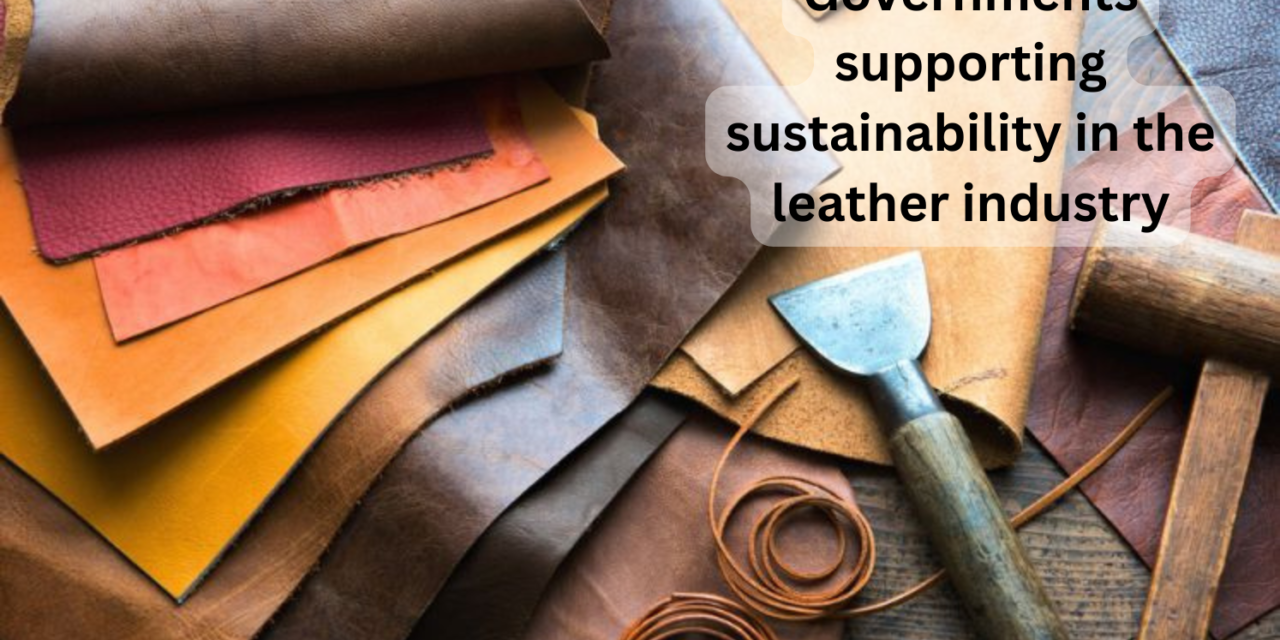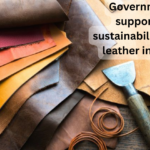Governments around the world are implementing various measures to support sustainability in the leather industry. These efforts are aimed at reducing the environmental impact, promoting ethical practices, and fostering economic growth within the sector. Here are some key ways governments are supporting sustainability in the leather industry:
1. Incentives for Sustainable Practices:
- Financial Subsidies and Tax Incentives: Many governments provide financial incentives or tax rebates to companies that adopt eco-friendly practices. This could include adopting sustainable tanning methods, using recycled leather, or implementing waste reduction technologies.
- Subsidies for Clean Technologies: Governments may offer subsidies or grants to encourage the leather industry to invest in cleaner, more sustainable technologies, such as closed-loop water systems or energy-efficient machinery.
2. Environmental Regulations and Standards:
- Tanning Process Regulations: Governments often set strict regulations on the use of harmful chemicals in the leather tanning process. For instance, regulations that limit the use of chromium and other toxic chemicals have been implemented in many countries, encouraging the use of more environmentally friendly tanning methods like vegetable tanning or chrome-free tanning.
- Pollution Control: Regulations on water usage, wastewater management, and emissions help reduce the environmental impact of leather production. Many governments require leather manufacturers to treat and recycle water used in the production process, reducing the burden on local water resources.
3. Promoting Circular Economy and Recycling:
- Circular Economy Policies: Many governments are adopting circular economy frameworks that encourage companies to design products with longer lifespans, promote recycling, and reduce waste. Some countries have introduced policies that support the collection and recycling of leather products at the end of their life cycle.
- Take-back Programs: Some governments are working with the private sector to establish take-back schemes where consumers can return used leather products for recycling or repurposing, reducing the need for new raw materials.
4. Support for Ethical Sourcing and Animal Welfare:
- Animal Welfare Legislation: Many governments have introduced legislation to ensure ethical sourcing of leather, requiring producers to adhere to certain animal welfare standards. This helps ensure that leather production does not contribute to animal cruelty.
- Certification Programs: Some governments support certification programs like the Leather Working Group or Fair Trade to promote ethical and sustainable leather production, ensuring that leather manufacturers follow responsible sourcing and production methods.
5. Research and Innovation Funding:
- R&D Grants: Governments are investing in research and development (R&D) to find innovative ways to reduce the environmental impact of leather production. This includes funding research into sustainable leather alternatives, such as plant-based and vegan leather, as well as developing more sustainable tanning methods.
- Public-Private Partnerships: Governments often collaborate with industry associations and universities to develop new technologies and materials that support sustainability in the leather industry.
6. Trade Policies and Market Access:
- Incentives for Exporting Sustainable Leather: Governments may offer trade incentives to companies that produce sustainable leather products to increase their export potential. This can include preferential trade agreements or marketing campaigns that highlight the sustainable practices of domestic leather manufacturers.
- Promotion of Eco-Labeling: Governments may encourage or require the use of eco-labels or certifications that verify sustainable practices in the leather industry, making it easier for consumers to identify products made with environmentally responsible methods.
7. Education and Awareness Campaigns:
- Consumer Education: Governments are increasingly involved in educating consumers about the sustainability of leather products. This includes promoting awareness of sustainable leather alternatives, encouraging responsible consumption, and explaining the benefits of supporting companies that adhere to ethical practices.
- Industry Training Programs: Governments support training initiatives to help leather manufacturers improve their environmental performance, learn about sustainable practices, and understand the latest eco-friendly technologies.
8. Sustainable Leather Standards and Certifications:
- Governments may establish national or regional sustainability standards for leather production. These standards encourage manufacturers to adopt best practices in terms of resource use, waste management, and chemical handling.
- Labeling Programs: Some governments support or create national eco-labeling programs that certify leather goods as environmentally friendly, ensuring consumers are making informed purchasing decisions.
9. Waste Management and Resource Efficiency:
- Waste Reduction Initiatives: Many governments are creating waste management policies that encourage leather manufacturers to reduce, reuse, and recycle materials. This could involve mandates for reuse of leather scraps, developing systems for leather waste recycling, or incentivizing the adoption of more efficient resource use in the production process.
10. International Cooperation and Agreements:
- Governments are often involved in international collaborations to promote sustainability within the leather industry. This includes adhering to global sustainability agreements and environmental protocols, sharing best practices, and cooperating on issues such as the global management of leather waste and pollution reduction.
Through these various efforts, governments are playing a significant role in promoting sustainability in the leather industry, encouraging ethical sourcing, reducing environmental harm, and fostering long-term industry growth that aligns with green and circular economy principles.














